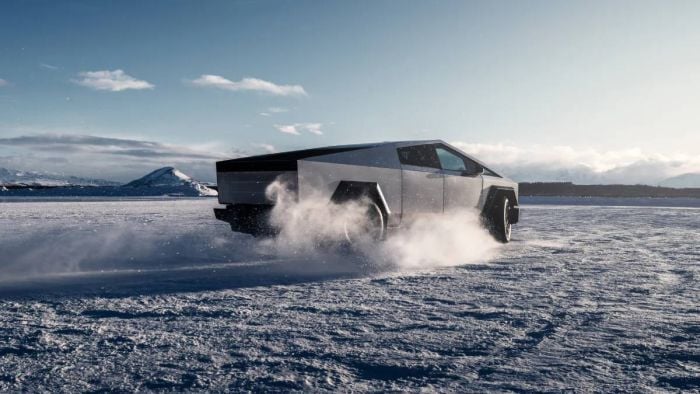Tesla launched its much-awaited Cybertruck a few weeks back. It also handed over the first few units of its futuristic stainless steel-plated electric pickup at the launch event. However, mass production of the electric pickup is proving to be tiresome due to battery production hell. The automaker uses its pioneering 4680 battery in the Cybertruck but the speed at which it can make these batteries is proving to be a bottleneck.
The 4680 batteries used in the Cybertruck come with new dry-coating technology, nine people familiar with the matter told Reuters. Tesla’s Giga Texas factory is currently churning out these battery cells at rate only sufficient to power about 24,000 Cybertrucks a year, or about a 10th of the required output, as per calculations based on a combination of public data and figures provided by sources to Reuters.
Tesla CEO Musk, in October, had said that the company would probably hit an annual production rate of a quarter of a million vehicles at some point during 2025. However, at current pace, this seems unlikely.
For Tesla, the vision behind using dry-coating on electrodes was to be able to ramp up battery output massively. The idea was to avoid the slower, more costly wet-coating. In 2020, the company forecasted that it would more than halve battery costs, cut investment significantly, and create smaller, greener factories with this new technology. However, Tesla is yet to crack dry-coating at the industrial scale needed to make 4680 batteries fast enough to hit its production targets.
While dry-coating the anode in the 4680 cells was not problematic, Tesla was struggling with the same technique for the cathode – the most expensive component in a battery. A battery technology consultant, Yuan Gao, told Reuters that dry-coating anodes and cathodes is proven in the laboratory, as well as for smaller energy storage devices such as super capacitors, and even some small batteries. “But no one has done it so far for large EV batteries at a mass scale and at a high enough speed. Tesla is the first one to try to commercialize this,” he said.
Tesla needs to scale up and speed up the process, but also develop its own equipment and tools. “It’s daunting to say the least,” Gao said.





